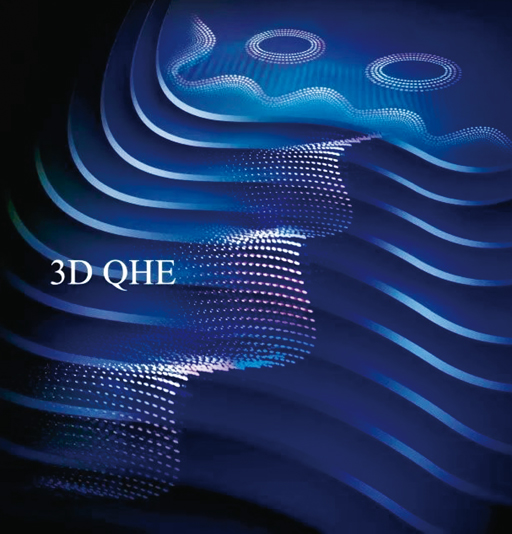By SONG Jianlan (Staff Reporter)
The discovery of the quantum Hall effect (QHE) in two-dimensional electronic systems in 1980 has rendered topology a central role in condensed matter physics. Since then, how to generalize it to a three-dimensional system has intrigued physicists. In 1987 Bertrand Halperin et al. theoretically demonstrated that it is possible to observe this phenomenon in a three-dimensional electronic system and predicted its signature in their paper, however, its experimental observation has proven to be challenging.
A joint team consisting of groups led by Prof. QIAO Zhenhua at USTC, Prof. ZHANG Liyuan at the Southern University of Science and Technology, and Prof. YANG Shengyuan at the Singapore University of Technology and Design, succeeded in observing the 3D QHE in bulk zirconium pentatelluride (ZrTe5) crystals, and reported their experimental findings in Nature on May 23rd 2019.
The joint team performed low-temperature electric-transport measurements on bulk ZrTe5 crystals in a magnetic field and achieved the extreme quantum limit, where only the lowest Landau level is occupied, at relatively low magnetic fields. Maintaining this state, the team observed the signature of 3D QHE as predicted by Halperin et al.: a dissipationless longitudinal resistivity close to zero, accompanied by a well-developed Hall resistivity plateau proportional to half of the Fermi wavelength along the field direction.
Their theoretical analysis suggests that this could have resulted from Fermi surface instability driven by enhanced interaction effects in the extreme quantum limit. With further strengthened magnetic fields, the team observed, both the longitudinal and Hall resistivity increase considerably and display a metal-insulator transition, which represents another quantum phase transition driven by magnetic fields.
This work provides experimental evidence of the 3D QHE and offers a promising platform for further exploration of exotic quantum phases and transitions in 3D systems. It ranks 10th in the annual top 10 science advances of China for 2019.

Three-dimensional quantum Hall effect observed in experiment (Credit: USTC)
Reference
Fangdong Tang, Yafei Ren, Peipei Wang, Ruidan Zhong, John Schneeloch, Shengyuan A. Yang*, Kun Yang, Patrick A. Lee, Genda Gu, Zhenhua Qiao* & Liyuan Zhang* (2019) Three-dimensional quantum Hall effect and metal-insulator transition in ZrTe5. Nature 569, 537–541.

